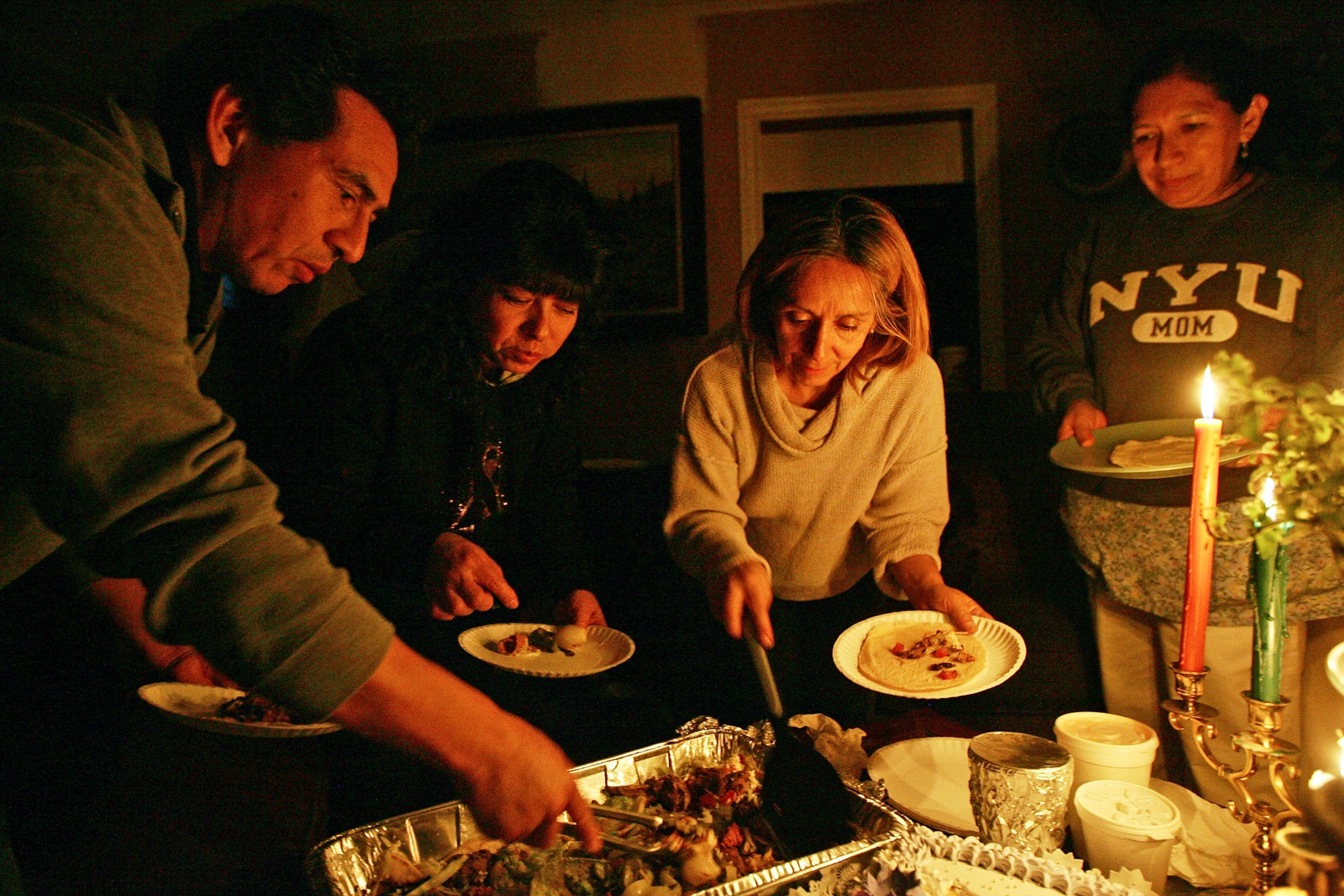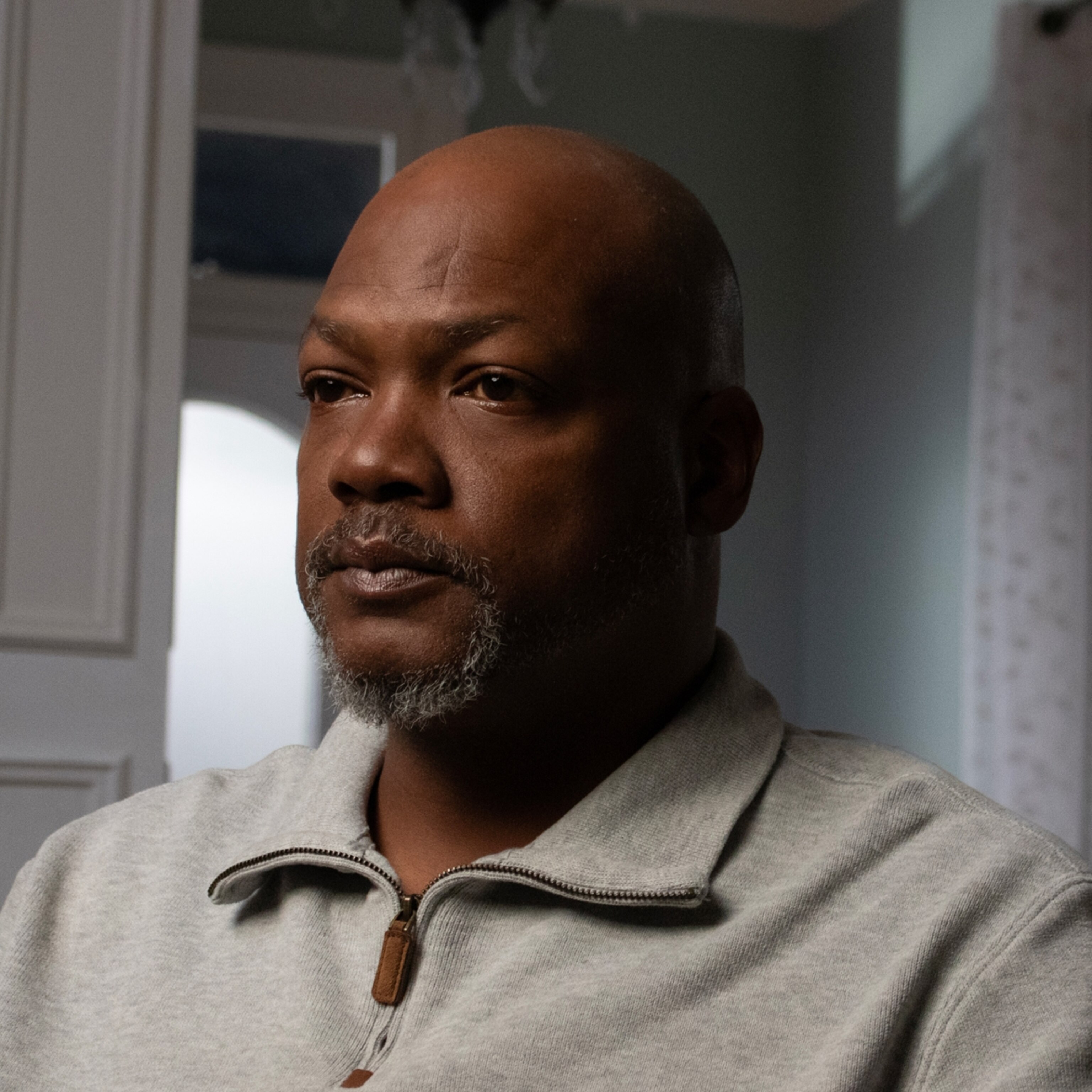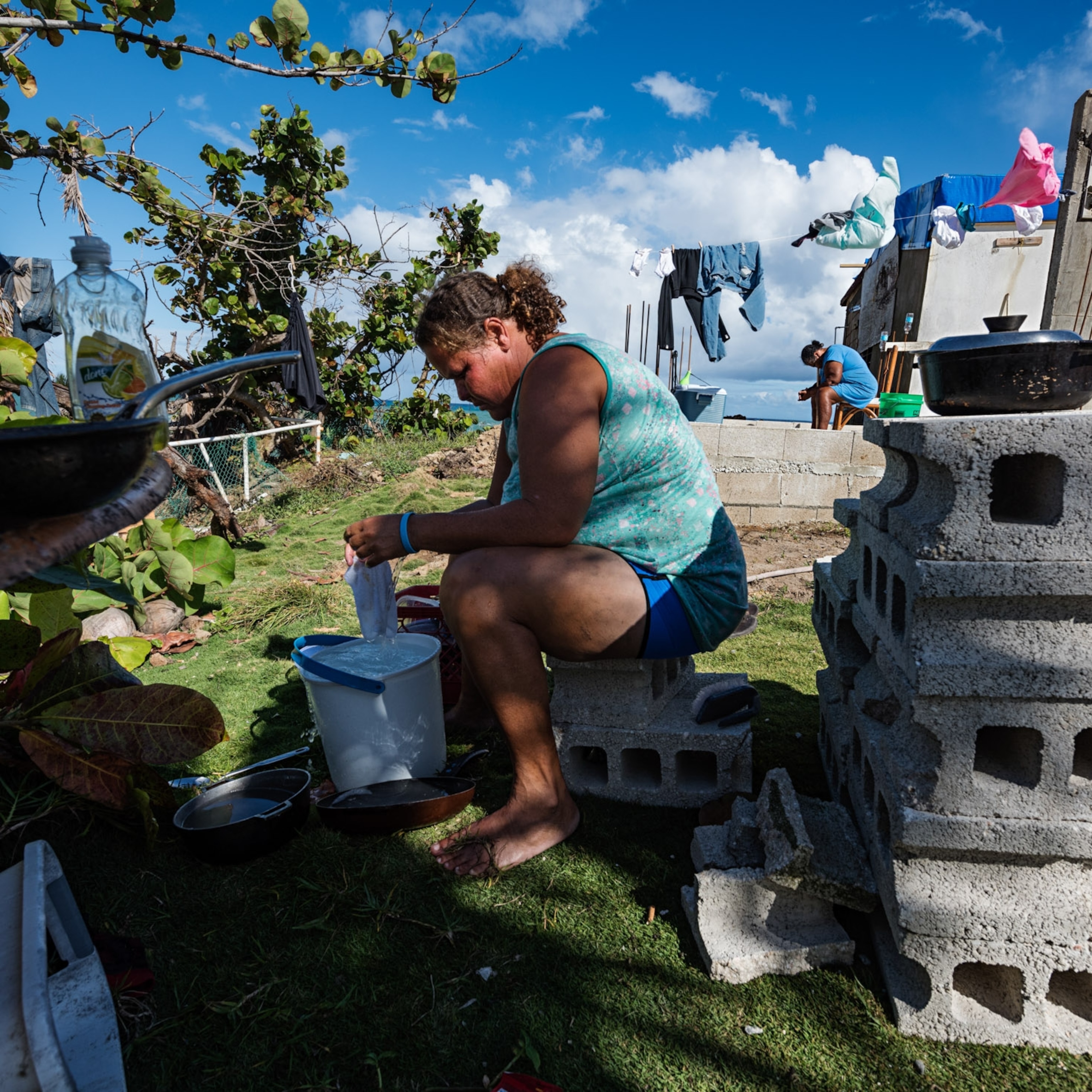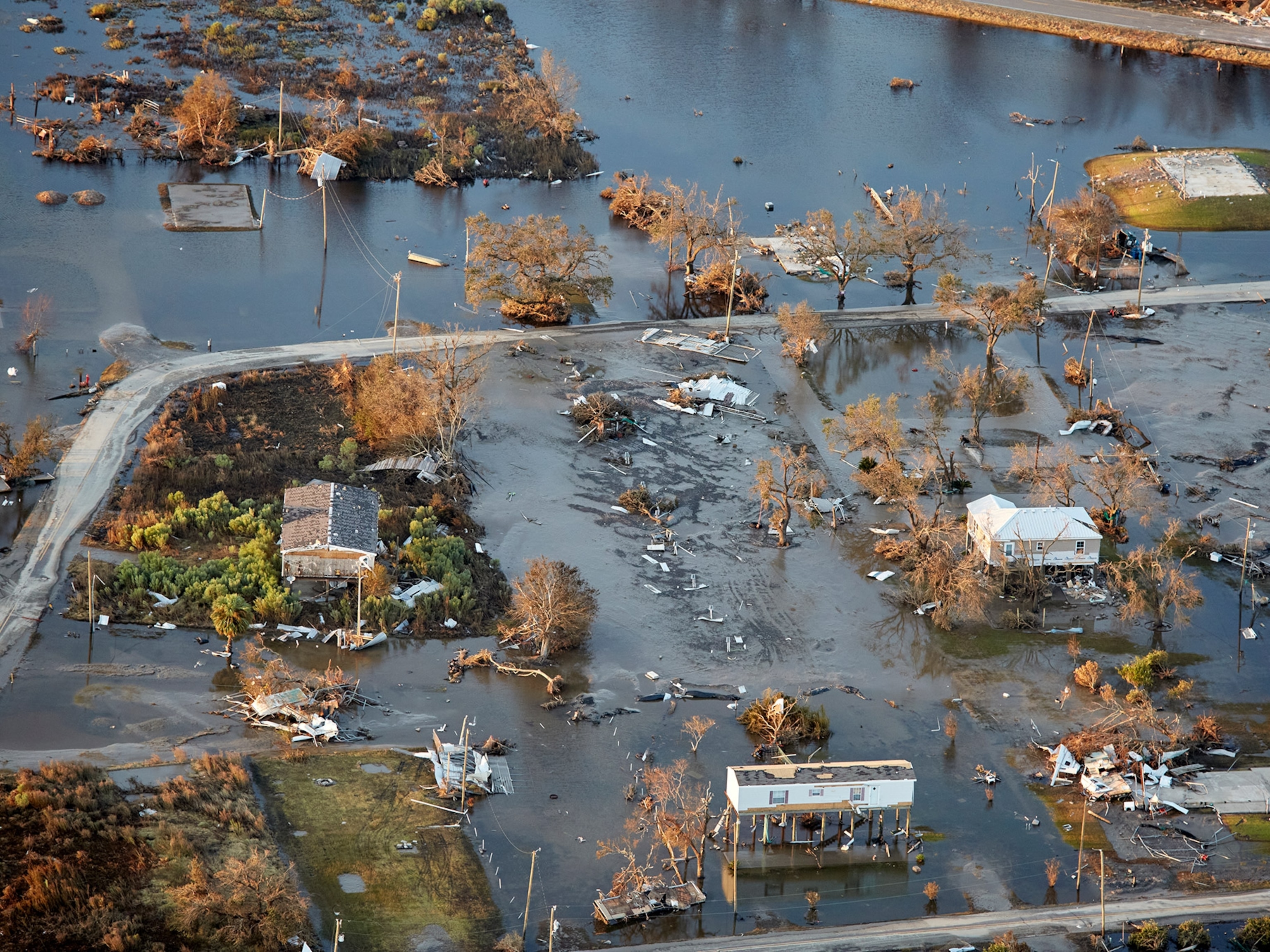
After Hurricane Sandy, Need for Backup Power Hits Home
Backup power generator sales have surged in the wake of Hurricane Sandy and other big storms. Go-it-alone solutions are moving faster than needed electric grid upgrades.
Generac Chief Executive Aaron Jagdfeld insists his company is not just watching the weather.
The leading U.S. maker of home and business standby generators said it was impossible to trace the company's recent trajectory of success to last year's Hurricane Sandy, the surprise "snowtober" blizzard of 2011, or any one of a number of other East Coast storms.
"We're trying to create our own awareness, to create our own storm, if you will," Jagdfeld told Wall Street analysts last Thursday in announcing an 85 percent increase in profits for the quarter. "It's a really bad strategy to sit around and watch the Weather Channel. That's not a strategy for a business."
"It's not?" deadpanned Christopher Glynn of Oppenheimer. After all, the company points to weather—and the state of the power grid—whenever it explains its financial results or its data showing 20 percent average annual growth in market penetration of home standby generators over the past decade.
"We believe continued underinvestment in the electric grid, an aging population, an increased reliance on uninterruptible power and data, and more severe weather will drive demand for our residential and industrial backup generators well into the future," said Jagdfeld.
Generator as Status Symbol
For many homeowners, the availability of diesel-powered or increasingly common natural gas generators provides peace of mind amid ever-more-common power outages. Author Anna Quindlen, who lives in rural Pennsylvania, penned a prose ode to her generator in the Wall Street Journal earlier this year. And in the immediate wake of Sandy, the Daily Beast suggested that backup generators had taken on a status-symbol aura, quoting a Westport, Connecticut, real estate broker who recommended emergency power boxes to all of her clients: "For the kind of money that these houses cost, to spend $8,000 or $10,000 on a generator isn't a significant extra investment," she said.
But a number of energy experts believe there's a troubling side to the trend. It reflects an increasing reliance on go-it-alone solutions—for those who can afford them—rather than the needed society-wide investment in a modernized and more resilient electric power grid. (See related "Quiz: What You Don't Know About Electricity.")
"We've gone to this pioneer mentality," said Richard Little, who before retiring was director of the Keston Institute for Public Finance and Infrastructure Policy at the University of Southern California, in an interview following Hurricane Sandy last year. "Everybody's got to have a generator. If I lived in New Jersey, I'd have a generator too. But not everyone can do that. We've got to find better solutions."
Security Risk
Just as Generac was announcing its earnings, in fact, U.S. Energy Secretary Ernest Moniz was focusing on U.S. electric grid problems in an address in Washington, D.C., to mark the 40th anniversary of the Arab oil embargo. Although the nation may be less vulnerable to hostile acts abroad than it was in the 1970s, he said a home-grown problem—the insufficiently resilient electric grid—must be viewed as one of the major energy security risks today.
Estimates vary on the amount of investment needed. Massoud Amin, director of the Technological Leadership Institute at the University of Minnesota and a pioneer in grid research, has urged the U.S. power industry, in partnership with the government, to make an investment of about $30 billion a year over the next 20 years to upgrade the grid. (See related blog post by Amin: "As U.S. Plans $7 Billion Effort to Electrify Africa, It Faces Challenges at Home.")
The American Society of Civil Engineers, in a report earlier this year that gave the nation's energy infrastructure a grade of D+, estimated that $3.6 trillion in investment was needed by 2020. In its investor presentation, Generac cites a cost of $4 trillion for just one potential grid fortification measure: placing the distribution system underground, a step not likely to be in the offing or even to be effective in all cases. (The flooding of underground electrical infrastructure in Manhattan caused massive power disruptions during Hurricane Sandy.)
Moniz said his department is focusing on the nationwide power infrastructure issue in its quadrennial energy review now under way, a report that is likely to produce more estimates and suggested approaches to grid modernization. But for now, one of the U.S. Energy Department's first projects to address the Hurricane Sandy aftermath is to work on what essentially is a supersized version of the standby home generator. The Energy Department's Sandia National Laboratories is working with the state of New Jersey and the New Jersey Board of Public Utilities to design an advanced microgrid system to ensure that the state's rail system can keep running reliably even in the event of storms that cause widespread power outages. (See related blog post: "'American Blackout': Four Major Real-Life Threats to the Electric Grid.")
Microgrid Solutions
As financing modernization of the big grid continues to be a challenge, energy experts are talking more about the important role such microgrids could play. The Brookings Institution Energy Security Initiative has said there is a strong case for such "distributed power systems" for U.S. military installations. The backbone of most of such existing power systems, according to Brookings' research, is the standby or emergency generator, with the overwhelming majority powered by fossil fuel, either diesel fuel or natural gas.
Reliance on those fuels mean there's yet another set of infrastructure vulnerabilities to worry about; depending on which fuel they use, generator owners need to have access to enough gasoline or diesel, or the neighborhood's natural gas pipelines have to be intact and operational. Hurricane Sandy saw long lines for fuel throughout New York and New Jersey, and a number of failures of natural gas pipeline systems due to widespread structure damage. Nevertheless, Navigant Research says the market for small generator sets is growing, and projects small diesel generators will be a $41 billion global market, and small natural gas generators a $10 billion market, by 2018. (See related blog post: "Preparing for the Zombie Apocalypse: Are Microgrids Our Only Chance?")
As for the areas hit by Hurricane Sandy, there are some efforts under way to put into place backup power systems for entire communities that are cleaner than typical fossil-fuel-powered single home generators.
A ribbon-cutting took place last Wednesday to kick off installation of a new backup solar energy system at Red Hook Recreation Center in Brooklyn, one of the areas hardest hit by the storm. In a project pledged over the summer under former President Bill Clinton's Clinton Global Initiative, the nonprofit group Global Green USA is installing such solar systems at five or more community facilities. (See related, "Quiz: What You Don't Know About Solar Power.")
Mary Luévano, Global Green's policy and legislative affairs director, said the idea is to establish a place where people can go to charge phones, plug in computers, and refrigerate medicine, even when the power is down. The system will have battery backup so it can operate for several hours at night or when the sun isn't shining. (See related story: "Second Life for Electric-Car Batteries: Guardians of the Grid.")
"This is not power from some distant station where it has to travel 100 miles," Luévano said. "This will be generated on site."
Of course, diesel or gas standby generators have the same advantage, and are generally cheaper and quicker to install than solar systems. But Luévano said Global Green USA, which worked on several solar rebuilding projects in New Orleans after Hurricane Katrina, has watched the cost of renewable energy systems drop dramatically. (See related story: "For Hurricane Katrina Victims, A Solar Restart.") "Our hope is that they become the standard practice rather than the exception to the rule," she said. "Solar panels are a little harder, but they're a longer-term answer to your energy needs."
This story is part of a special series that explores energy issues. For more, visit The Great Energy Challenge.








